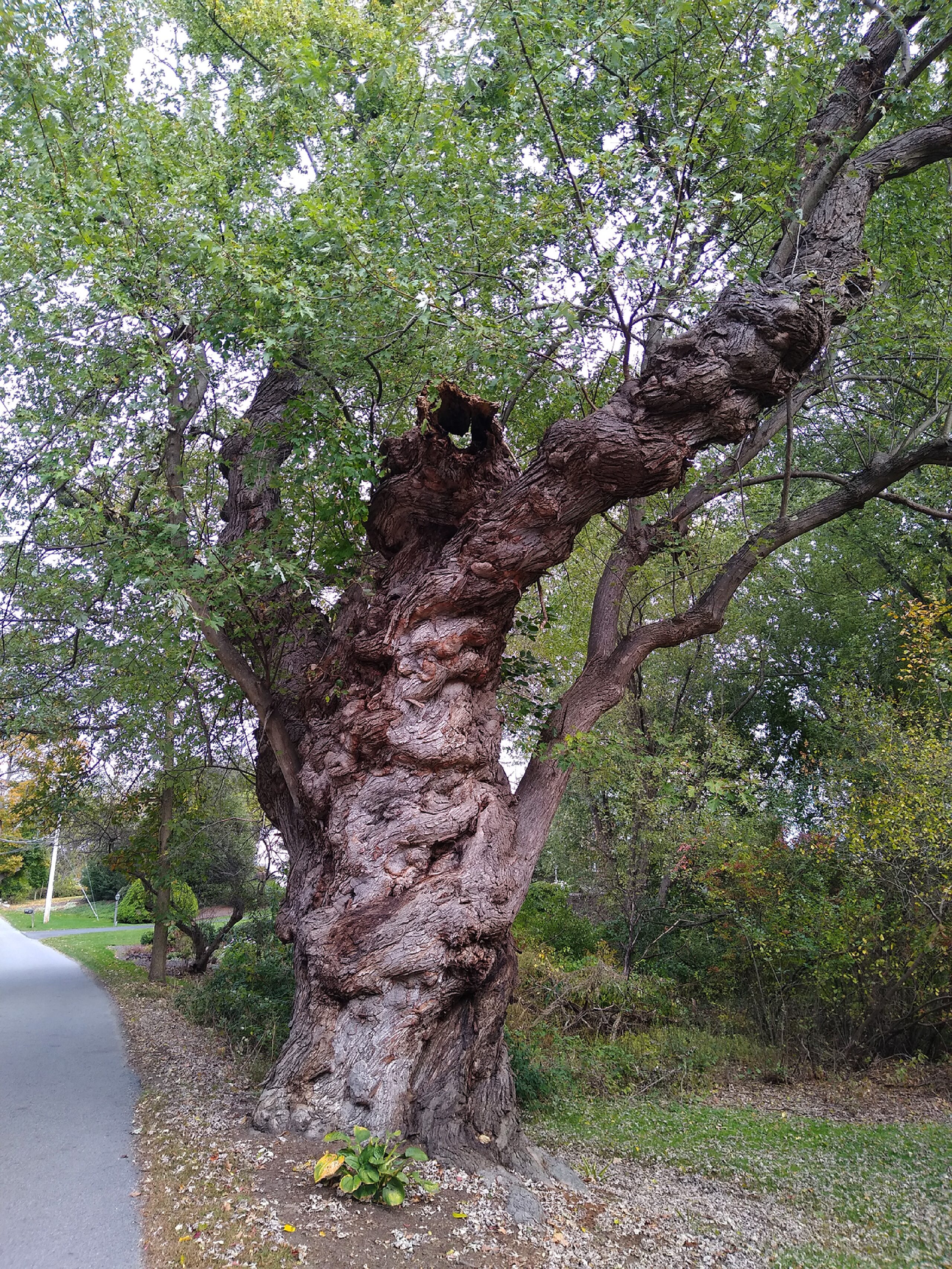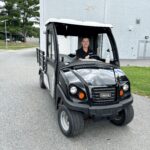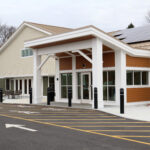There’s a surprisingly effective way that Wayland residents can contribute to the fight against climate change. It doesn’t involve complex and expensive new technology. What it requires is safeguarding the trees in our yards and neighborhoods — particularly the older, mature ones — and supporting efforts to conserve New England’s forests.
In a recent talk, environmental scientist Bill Moomaw presented eye-opening facts about the vast and often overlooked role that our local New England forests play in absorbing carbon dioxide from the atmosphere. The talk was sponsored by Metrowest Climate Solutions, CFREE Lincoln, Energize Wayland, and Green Newton. Moomaw, a former professor of international environmental policy at Tufts University, has studied the impact of forests on climate and ecology for decades.
Moomaw noted that U.S. forests store approximately 11% of the nation’s CO2 emissions. “That may not sound much, but no technological solution to reducing emissions is doing that well,” he said.
In Massachusetts, the legislature has committed to reaching net zero greenhouse gas emissions by 2050. That commitment is based on an estimate that forests, together with urban trees, can be counted on to offset up to 15% of the state’s goal for reducing emissions. According to the U.S. Forest Service, that’s equivalent to annual emissions from 50 million gas- or diesel-fueled vehicles.
These figures collectively indicate that conserving trees offers a highly effective way to combat climate change. Yet in Massachusetts, it’s estimated that the state is losing an average of 3,000 acres of forest land every year due to development. Trees absorb CO2 as part of the process of photosynthesis. With the help of sunlight and water, carbon from CO2 is converted into sugars and oxygen. The sugars then create cellulose and lignin, the main components of wood.
Moomaw explained that approximately 50% of the wood in trees is composed of carbon absorbed through this process. Carbon is also stored in tree root systems, undergrowth, the forest floor, and soils.
In a groundbreaking 2021 study, Moomaw and his colleagues demonstrated that Eastern white pine trees absorb CO2 at an accelerating rate as they grow, with the majority of this uptake occurring during the mature stage of their growth. In fact, a stand of pines can double its carbon volume between approximately 80 and 160 years. That makes the age and size of trees crucial factors in their ability to store emissions.
New efforts to protect trees
But these larger, older trees are highly vulnerable to removal by developers and property owners, according to Linda Hansen, conservation administrator for Wayland’s Conservation Commission. “Tall eastern white pines with their shallow root systems are seen as particularly hazardous if they’re close to houses,” she notes. The commission is currently proposing a controversial new tightening of its tree removal regulations (see the Wayland Post’s May 30 article on the Stormwater and Land Disturbance Bylaw).
Concerns about dwindling tree populations have led Wayland’s neighbors in towns such as Newton, Lexington, Concord and Wellesley to adopt similarly stringent tree removal and replacement policies that apply to nearly all types of development projects. Concord’s bylaw mentions explicitly that it was developed “in response to citizen concerns over the loss of mature trees on redeveloped lots (tear-downs), and properties with significant building expansions.”
Old forests in a warming world
While replacing trees with new plantings is a worthy aim, its value from a climate change perspective is less clear. New trees are usually smaller than the ones they’ve replaced, and, as Moomaw pointed out, it may take many years for them to reach their full carbon storage potential. “In fact, it can take 28 to 36 years to repay the carbon cost of the emissions generated by growing, transporting and planting a new tree. In some cases, that’s going to be longer than the lifetime of the new tree,” he said. If so, “then every time we plant new trees, we’re adding carbon dioxide to the atmosphere, rather than removing it.”
That’s another reason why protecting old trees is vital. Moomaw coined the term “proforestation” to distinguish it from deforestation (the removal of tree cover) and afforestation (the growth of new forest over). Proforestation, he said, is the simplest and most effective way to mitigate climate change through forests. “We cannot plant our way out of climate change. We need to protect the trees we have.”
In addition to their role as a significant carbon sink, trees offer a range of other benefits, including cooling cities by providing shade and evaporating moisture, reducing the risk of flooding, and supporting a diverse habitat for a variety of birds and insects. To encourage biodiversity, some towns, including Weston and Needham, specify that replacement trees must be chosen from native species.
Vertical water tanks
“Think of what trees do for us,” Hansen said. “A single mature tree can absorb and release anywhere from several thousand to 40,000 gallons of water a year. They ensure good air quality and produce a significant portion of the oxygen we breathe. They provide shade and canopy, and it’s been estimated that a single oak tree can support at least 2,000 species of birds, insects, fungi and other life.”
The need for proforestation is all the more urgent, since old trees are a precious and increasingly endangered resource. The Forest Service estimates that only about 7% of old-growth forest, typically defined as trees living longer than 150 years, remains in the U.S. New England’s share is estimated to be less than 0.1%, possibly amounting to no more than 10,000–20,000 acres. Our challenge is to ensure that trees and people can continue to co-exist and thrive in our increasingly developed and warming world.














